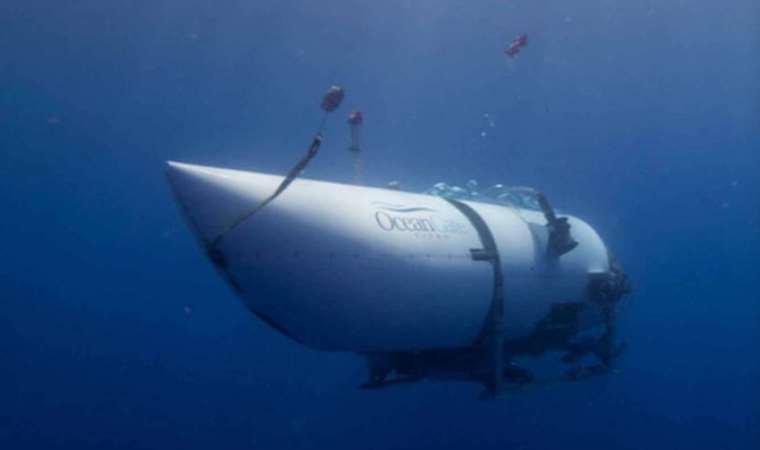Rescuers 'exponentially' expanding search for missing Titanic sub
Additional noises heard Wednesday as rescuers race against clock to find missing vessel.

The US Coast Guard said Wednesday that a multinational group of first responders is bringing in additional resources to scour above and below the ocean’s surface as the search for a missing tourist submersible dramatically expands.
Capt. Jamie Frederick, the First Coast Guard District response coordinator, told reporters in Boston, Massachusetts that additional banging noises were heard early Wednesday after first being detected Tuesday. Rescuers are now "exponentially expanding the size of the search area" to include an area twice the size of the state of Connecticut and two-and-a-half miles (4 kilometers) deep.
The source of the sounds detected on Tuesday has not yet been ascertained, and Frederick said experts are continuing to analyze them to determine if they are man-made or natural.
Five search ships, underwater unmanned vessels (ROV) and planes are currently scouring the area for signs of the Titan, with that number expected to double to 10 by Friday at the latest, according to the Coast Guard. P-3 Poseidon and C-130 airplanes are continuing continuous searches in the area in 14 hours shifts.
Personnel from Canada, France and the UK are assisting in the effort.
Frederick said the ROVs, or remotely operated vehicles, were relocated in response to the sounds heard Tuesday, but "yielded negative results." Operations are ongoing.
"We're focused on searching at this point. This is a search and rescue mission 100%," he said. "You always have hope."
Officials said earlier that the Titan submersible had about 96 hours of oxygen for the five-person crew that disappeared Sunday. The timeline expires roughly Thursday morning, but Frederick emphasized it represents "just one piece of data."
"There are a lot of pieces of data that we need to consider. And we're continuously looking at that and we'll continuously do that throughout the search. But that's not the only thing that's important," he said. " That certainly is a dialogue that's happening. But we're focused on searching at this point."
Frederick declined to say when officials might shift efforts from rescue operations to recovery, but said: "We're not there yet."
On board the Titan are British billionaire Hamish Harding, who owns Action Aviation; Pakistani businessman Shahzada Dawood and his son, Soleiman; French submarine pilot Paul Henry Nargeolet and Stockton Rush, founder and CEO of OceanGate, which owns the vessel and organized the mission.
The eight-day tour ticket, which includes diving to see the wreckage of the Titanic in the submersible, costs $250,000.
The Titanic lies on the floor of the Atlantic Ocean, more than 2 miles (3.2 kilometers) beneath the surface.
The luxury cruise liner Titanic, touted as “unsinkable,” sailed from Southampton, England, on April 10, 1912, with 2,224 passengers and crew, bound for New York.
On April 15, still on its maiden voyage, the ship sank in the North Atlantic after hitting an iceberg.
More than 1,500 people lost their lives in the accident, some freezing to death in ice-cold water, and many of whom were poor passengers in the ship’s steerage section. There were only enough lifeboats for 1,178 people. Arriving at the crash site a few hours later, a ship named Carpathia rescued 710 people.
